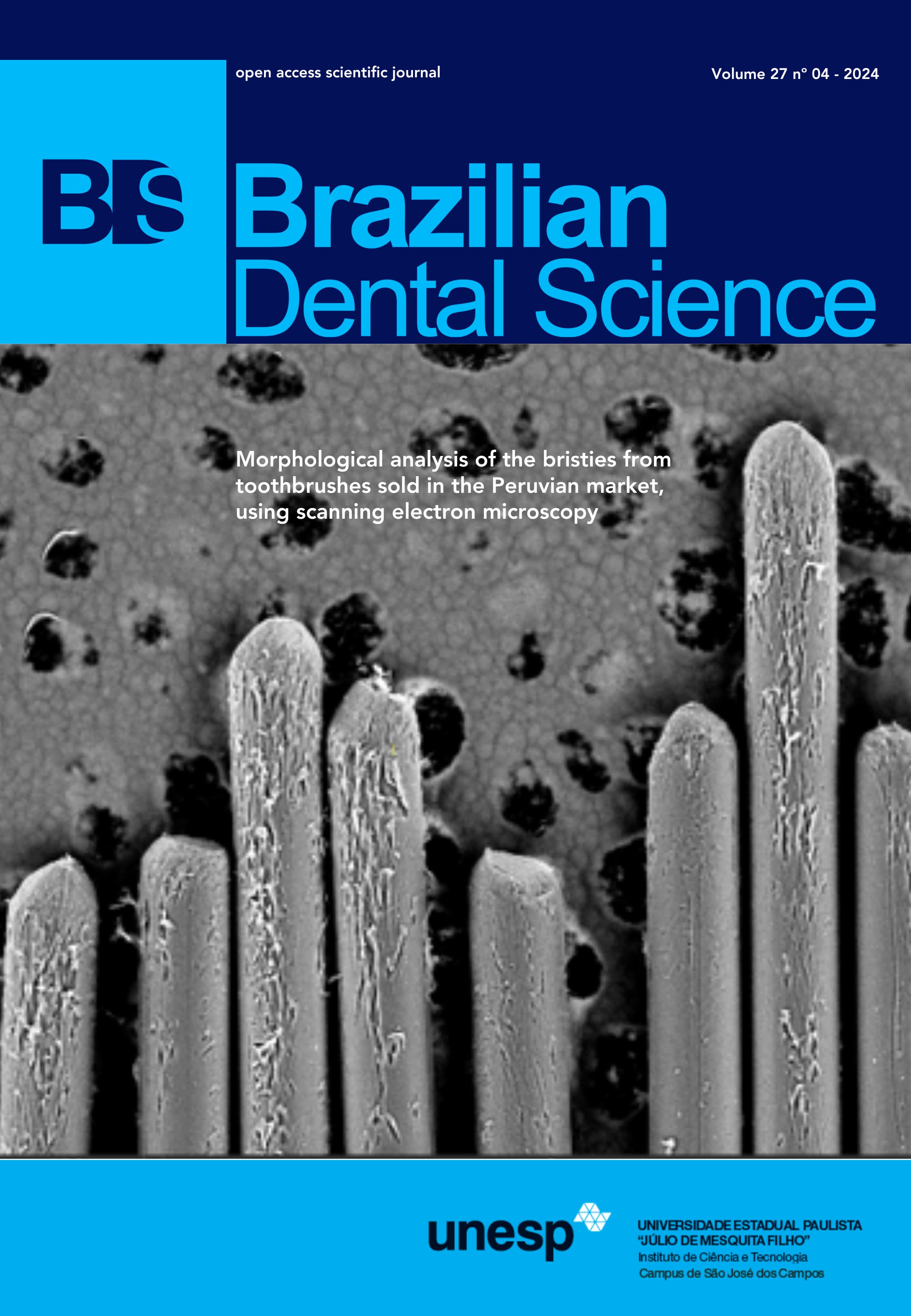Efficacy of quercetin nano-emulgel as adjuvant local delivery drug in non-surgical treatment of periodontitis
DOI:
https://doi.org/10.4322/bds.2024.e4419Abstract
Objective: The objective of this study was to assess the impact of quercetin nano-emulgel on clinical and biochemical markers in patients with stage I and II periodontitis as an adjuvant to scaling and root planing (SRP). Material and Methods: Two groups were randomly assigned to 20 test sites from patients with stage I and II periodontitis: Group I, in which 10 sites got scaling and root planing, and Group II, in which 10 sites received scaling and root planing alongside quercetin nano-emulgel. Clinical parameters were recorded at baseline, 1 month, and 3 months; these included plaque index (PI), gingival index (GI), probing depth (PD), and clinical attachment level (CAL). Biochemical evaluations were conducted to measure the gingival crevicular fluid (GCF) interferon-gamma (IFN-y) level and total antioxidant capacity at baseline, 1 month, and 3 months. Results: All clinical variables improved after treatment in both groups, with significant improvement in Group II, which was higher than that in Group I at different intervals. The GCF total antioxidant level revealed a significant rise, while the IFN-y level showed a significant decrease throughout the study within both groups, with no significant difference between the 2 groups. Conclusion: Quercetin nano-emulgel showed promising results in improving clinical and biochemical parameters in treating periodontitis When used in conjunction with scaling and root planing. This encourages using quercetin nano-emulgel in clinical practice as an adjunctive treatment for stage I and II periodontitis.
KEYWORDS
Drug Delivery System; Emulgel; Nanomedicine; Periodontitis; Quercetin.
Downloads
Published
How to Cite
Issue
Section
License
Brazilian Dental Science uses the Creative Commons (CC-BY 4.0) license, thus preserving the integrity of articles in an open access environment. The journal allows the author to retain publishing rights without restrictions.
=================




























